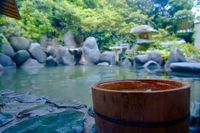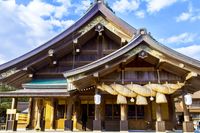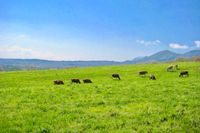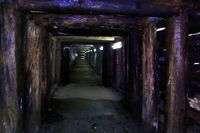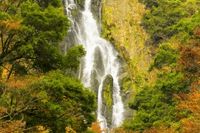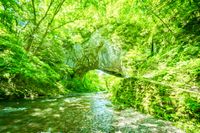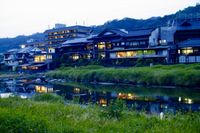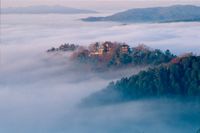Matsue Castle
島根県/松江市

Description
This is a castle built in 1611 under the instruction of Horio Tadauji. It is one of the 12 remaining castle towers, and also one of Japan's best 5 castles. The castle tower is situated on a small mountain, 29 meters in height, where Lake Shinji can be viewed from the top. The castle roof tower design has four such roofs stacked on top of each other in a staggered fashion, facing north, south, east and west, resembling the open wings of a thousand birds, which has given it its alternate moniker of "Chidori Castle" (Thousand bird castle). 松江城 © 島根県 クリエイティブコモンズライセンス(表示4.0 国際)https://creativecommons.org/licenses/by/4.0/
Homepage
Address
Nearby Car Night Spots
Nearby Activities
There is no nearby activities
Ranking Stations
Vanlife BASE | 45 min. from Narita Airport / Perfect for campervan travel/A seaside town rich in nature/Japanese countryside town/welcome traveler
¥7,000〜
/ per nightChiba Koseki, Kujukuri-machi, Sambu-gun
5.0
(61)(Bonfire BBQ) Chita Mihama Noma Beach Station
¥3,500〜
/ per nightAichi Noma, Mihamacho, Chita County
4.7
(42)Nearby Drive Spots
Tamatsukuri Onsen
This is an onsen in the northern part of Shimane prefecture. It has 1300 years of history, and was registered as a "Kami no Yu" (God's hot spring) by the Izumo Kuni Fudoki (which is an ancient report on provincial culture). The area has been historically famous for the three sacred imperial treasures, which includes various jewelry items which were made in this area. Along the Tamayu River, there are lines of cherry blossom trees, as well as "Sukiyazukuri" (a refined, well cultivated traditional Japanese architecture style) Japanese Ryokan, which creates a calm and stately atmosphere.
Izumo Taisha Shrine
This is Japan's oldest shrine, built before 0 BC. It is said that that it houses the great God Okuninushi no Mikoto, which is said to have surrounded the country to the God Amaterasu. On Kannazuki (October) all of the 8 million Gods, (excluding the two aforementioned Gods) are said to gather at this place and hold a ceremonial discussion regarding the destiny of the humans on the planet. For this reason, it has been revered and worshipped as a place of good fortune since its inception.
Hiruzen Kogen
This is a highland area in Norther Okayama prefecture of an altitude of 500-600 meters. It has Japan's largest jersey cow field as well as numerous camping facilities, and attracts many visitors that wish to escape from the heat. It is said that the area inhabits a ghost known as "Suiton" which is said to appear, and statues of it exist around the area.
Iwami Ginzan Silver Mine
This is Japan's largest silver mine, located in Shimane prefecture, and is a world heritage site. It is said that from the Sengoku to the Edo era(1467~1868), that this mine produced one third of the world's silver. The area is characteristic for its environmentally friendly approach to the surrounding area, which ensures minimum damage to mountains, no cutting of forests or digging narrow tunnels or other mining.
Kanba Falls
This is a waterfall in central Okayama prefecture. It has a height of 110m, making it the highest in Western Japan. The area is also habitat to wild Japanese monkeys. The area is also popular for autumn leaf (momiji) viewing.
Taishakukyo Gorge
This is a canyon of 18 km in length in the eastern part of Hiroshima prefecture. It is famous for its natural bridge, Onbashi, formed by the erosion of limestone over the years by river water. In addition, in Lake Shinryu, there are numerous stunning views such as the greenery in spring, the autumn leaves, and the numerous water birds that inhabit the area.
Misasa Onsen
This is a hot spring in the centre of Tottori prefecture. With 900 years of history, the onsen was loved by writers such as Yosano Akiko, Nogushi Ujo and Shiga Naoya. The area was known as a place of healing - so much so, that it was known as the place "where illness disappears by the third day of being here". Along both sides of Mitoku River, there are various traditional Japanese Ryokan, making this a popular onsen town to experience the nostalgia of the Japan of times past.
Bitchu Matsuyama Castle
This is a castle built in 1240 by Akiba Saburo Shigenobu. It is situated at the top of the 430 meter tall Mount Gagyu, and among Japan's remaining castle towers, is located at the highest location in Japan. During the battle of Bicchu in 1574, the large castle walls were built, and became a great fortress stronghold. During the months of October to April, it is possible to see the clouds below, giving it the alternate nickname of "The heavenly castle".










